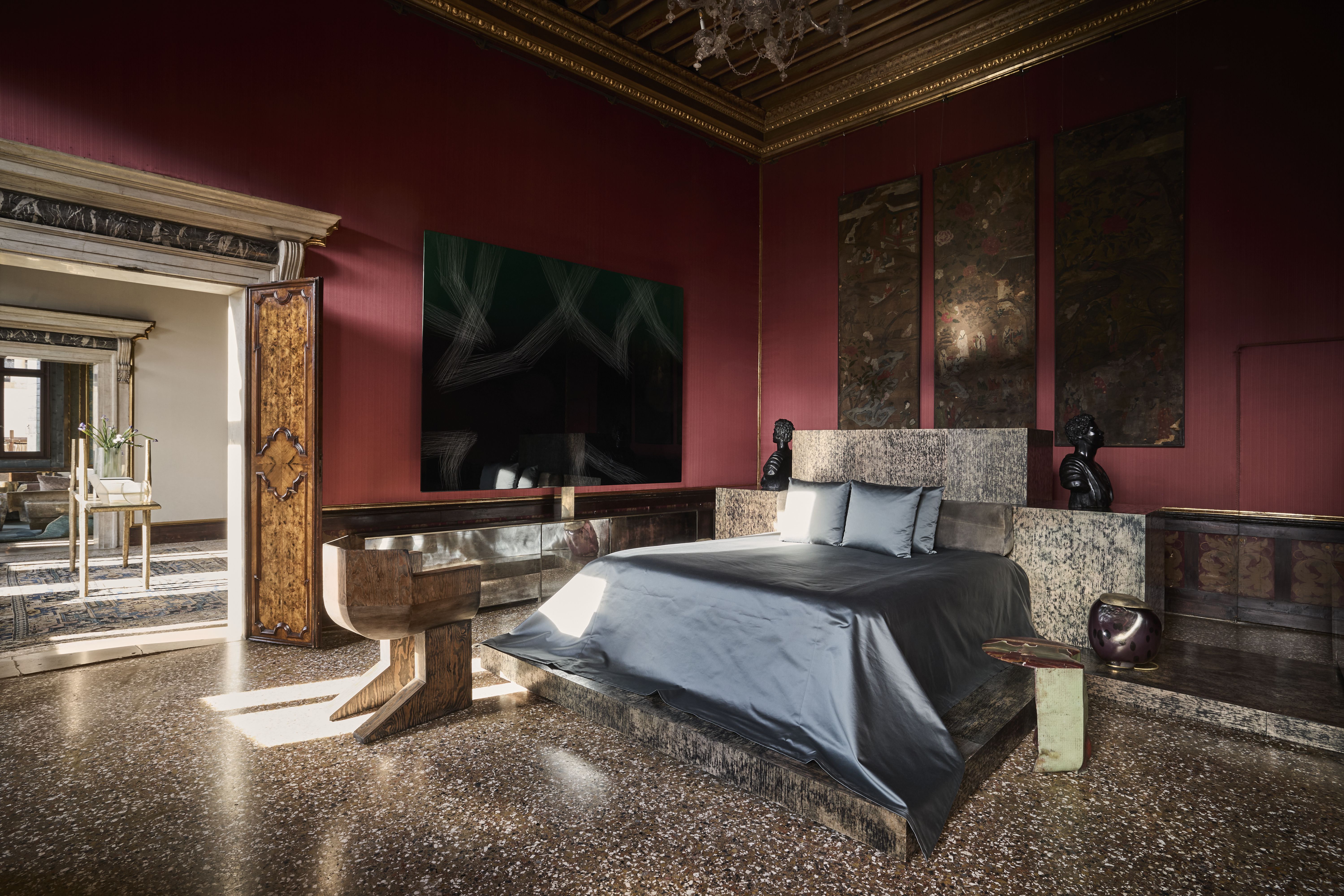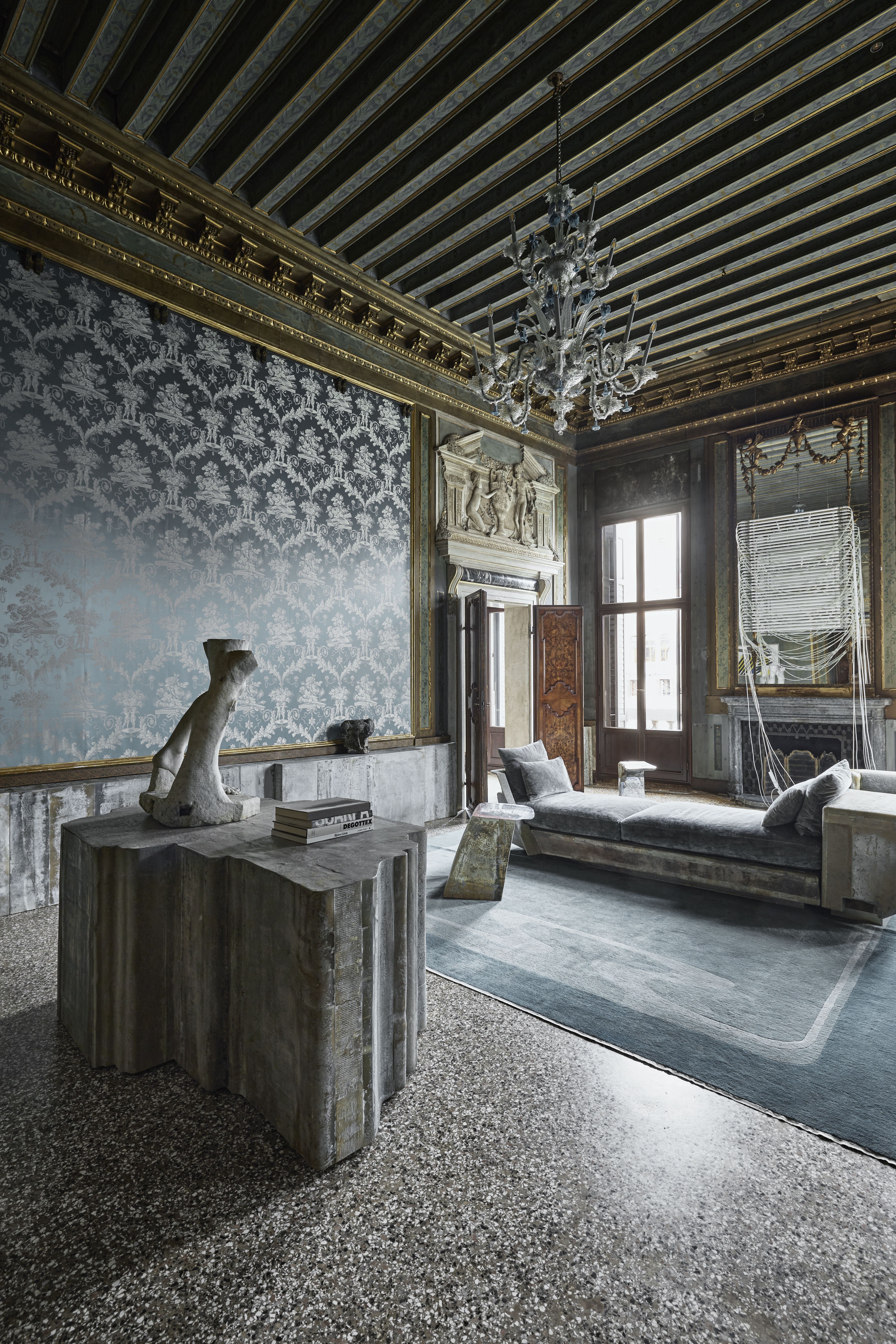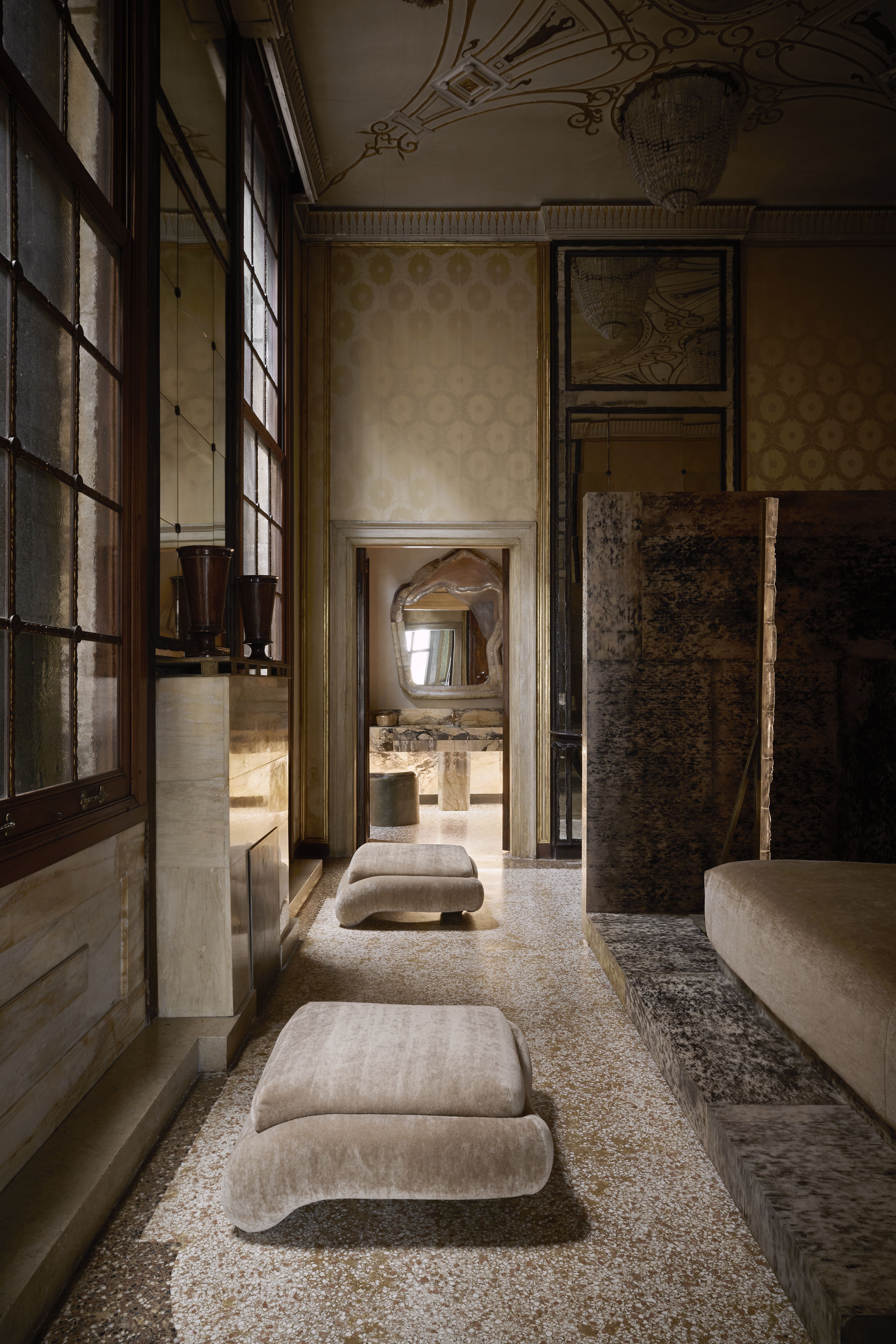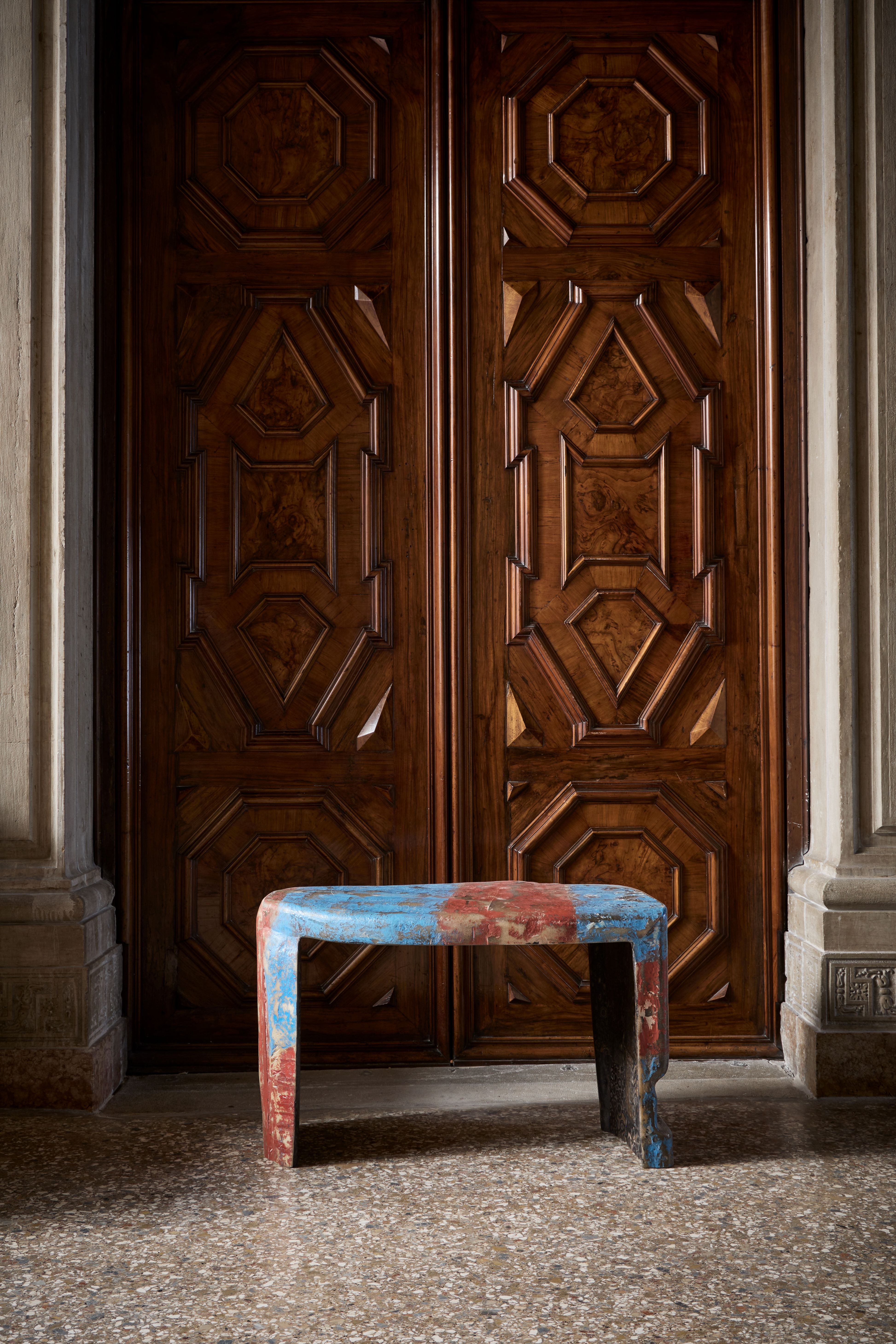
Perched on the grand canal, inside 15th century Palazzo Giustinian Lolin, the new Vincenzo De Cotiis Foundation opened its doors during the inauguration of Venice Biennale 2024. The space is an evolution of what was known as De Cotiis Venice, and captures the essence of the Italian designer’s contemporary storytelling through the lens of ancient Venetian culture.
Vincenzo De Cotiis Foundation

‘It has been a long time coming,’ says Claudia Rose De Cotiis, president of the foundation, discussing her and Vincenzo’s affinity to the history and unique light that floods the city of Venice. Seeing the foundation as a hub of exhibitions, public art and installations, the venue opens with a show titled ‘Archeology of Consciousness’ featuring three monumental arches by Vincenzo De Cotiis, creating a dialogue between the cityscape, the surrounding water and humanity.

The edifices are similar to the passageways found throughout Venice and its winding streets. ‘The arch is an old structure,’ says Vincenzo, ‘one that has served countless civilisations both structurally and aesthetically.’ Here, the passage is a metaphorical one: ‘my artworks stand removed from function, and instead offer significant value to those who experience them as portals to philosophical understanding and spiritual enlightenment.’

You can’t think of Vincenzo De Cotiis sculptures and not associate them with deep brasses and intense marble, and these powerful works are a true fusion of the two. But this mix sees the addition of Murano glass and fiberglass, further connecting to the context of Venice.
‘These are materials that I use recurrently throughout my practice, due to the way they interact with each other, their various refractive properties, and also their wildly different internal natures,’ says Vincenzo. A journey from dusty pink to deep red marble occurs in the different arches. The natural waterways of Venice are an influence, too. ‘The interaction between marble and water, edifice and lagoon, is a marvel and teaches you that being led by nature is key to bringing a material to life.’

Across the foundation, more of De Cotiis’ work seamlessly moves through the baroque interiors. ‘Venice has always served as an inspiration for me, long before we had plans to set up the Foundation here,’ he remarks, and this is seen through the sculptural forms of seating and tables that transport you back to when this location was a family home in the 17th century. Three centuries later, it housed the Ugo and Olga Levi Foundation for Music Studies.
True to this legacy, there’s hopes for the foundation to continue as a space for symphonics, as Claudia shares they may ‘dive into new territories like contemporary music.’ Research is certainly high on the agenda with the Foundation’s future displays, as Claudia asserts, it is a ‘force that is needed for originality and for creativity.’







